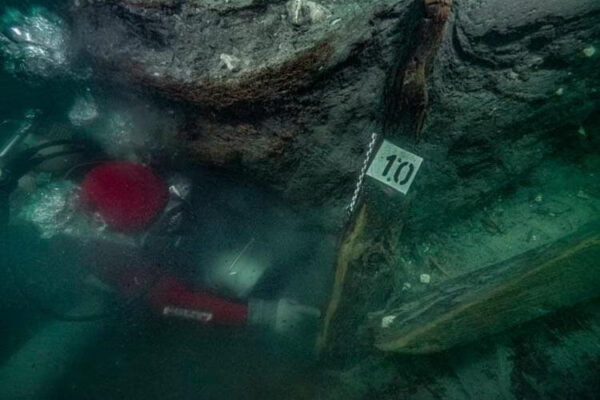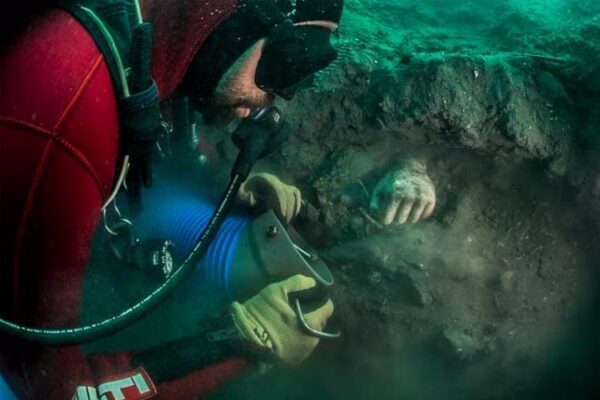Submerged temples discovered off the Egyptian coast
In the Mediterranean Sea, just off the coast of Alexandria, an ancient Egyptian temple dedicated to Amon and a Greek sanctuary dedicated to Aphrodite have been found

In the Mediterranean Sea, just off the coast of Alexandria, an ancient Egyptian temple dedicated to Amon and a Greek sanctuary dedicated to Aphrodite have been found
French archaeologist, Franck Goddio has discovered two submerged temples off the Egyptian coast. Goddio is a world-famous architect who, in 1987, founded the Institut Européen d’Archeologie Sous-Marine (IEASM), a charity organisation that identifies, explores and uncovers submerged sites in close partnership with the governing bodies of many countries.
After searching using modern methods, the objects recovered by IEASM are restored and preserved and then are given to the permanent collections of national museums in the countries they were discovered, or they go on to be part of travelling exhibitions.
Their research methods have led to a number of significant and historically important discoveries, like the reconstruction of the ancient port of Alexandria and the discovery of Thonis-Heracleion in 2000, after five years of searching, using a combination of historical documents and modern technology.
Now, in the Mediterranean Sea, just off the coast of Alexandria, an ancient Egyptian temple dedicated to the god Amon and a Greek sanctuary dedicated to Aphrodite have been found, both full of marvellous objects in very good condition. The discovery was made by a joint French-Egyptian team in the same bay of Abu Qir where the city of Thonis-Heracleion is located. Under the floor in the temple of Amon, extremely well preserved wooden structures were also discovered.

Thonis-Heracleion was an ancient port city, mentioned in documents since the end of the XII century BC, and reached it maximum splendour between VI and IV century BC. For hundreds of years it was the main port of entry to Egypt for Greek ships, until it was replaced by Alexandria in II century BC.
The city’s decline was caused by a natural disaster: an earthquake, possibly followed by a tsunami, eroded the land under the city. After the collapse of the infrastructure, what was left began to slowly sink under the water, remaining visible until VIII century AD, before disappearing completely, where it remained, undisturbed, for 1200 years.
Under the water’s surface buried by the sand, the archaeological site was not sacked, as happened to other Egyptian monuments in the Valley of Kings. On the site, around 70 vessels have been discovered together with coins, statues, jewels and pottery, all indicating a rich and flourishing city. In 2022 Goddio estimated that only 5% of Thonis-Heracleion had been uncovered: there is still an entire world to bring to light.

When a group of divers explored the southern channel of the city, where the temple of Amon collapsed during the cataclysm, they discovered incredible treasures. “Ritual tools in silver, golden jewellery and fragile alabaster containers for perfumes or salves,” states a report published by Goddio. “These – continues the report – demonstrate the richness of the sanctuary and the faith of the inhabitants of the port city.”
East of the temple of Amon, the divers discovered a Greek temple dedicated to Aphrodite, the Greek goddess of love, alongside a number of artefacts, but which also helped reconstruct the Greek presence in the city during the times of the Pharaohs. In Ancient Egypt, the Greeks were allowed to live, commerce and pray in their own temples, an open mentality that was very rare at that time. Discovery of Greek weapons indicates the presence of soldiers in the city, who were probably there to protect merchants and commerce.
Photo source: Franck Goddio – IEASM
Topics: Egypt, Thonis-Heracleion




